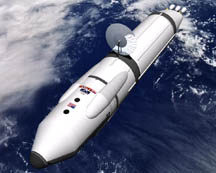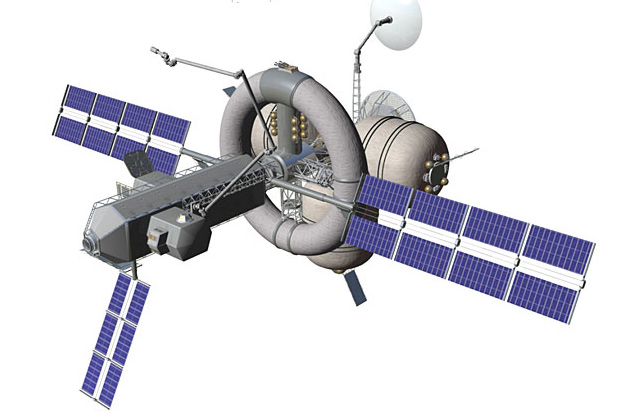Welcome to our 200th blog posting. It seems appropriate to write this article on a milestone date in the advancement of human technology in space. For today is the day that NASA’s Mars Science Laboratory, known also as Curiosity, has arrived on the surface of Mars to begin its planned two-year mission to study the history of that planet in a place where there is geological evidence of the presence of water in the past.

In previous entries to this blog site I have written a number of articles describing our efforts to unlock the secrets of Mars. The Viking missions of the 1970s left scientists with a quandary. Were the experimental results evidence of life or of a unique Martian chemistry? When Phoenix reached Mars and uncovered water ice and witnessed snow falling in the Martian atmosphere we were once more astounded by what seemed to be such an Earth-like world. And yet Mars is far from Earth and very much unlike our world.
Through Curiosity and its on board science laboratory we will gain a more comprehensive understanding of the chemistry, soil and atmosphere of Mars, and in its wake will set the stage for future missions including those by humans.
What Curiosity Has Taught Us Already – Radiation in Deep Space is a Problem
One of Curiosity’s tasks involved measuring radiation in transit on the way to Mars. Designed with a radiation protection shell capable of reducing exposure by 99%, over the eight months en route the amount of radiation penetrating the spacecraft recorded by the Radiation Assessment Detector or RAD was significant. Considering a human mission to Mars involving a two-way trip plus a significant period of time on the planet’s surface, the kind of radiation exposure any human crew would receive could prove lethal.

Curiosity’s RAD was switched off just before landing but will be turned on again as it begins its mission on the planet’s surface. We will know a lot more about the risk to human missions on the surface after studying the data we receive. But what we know now in terms of the cosmic rays and solar particle storms is that the existing designs of spacecraft for any human Deep Space exploration need to be altered radically to address the risk.
The Technology to Send Human Crews to Mars
Missions to Mars, inhabiting Mars, for many here on Earth this seems a pipe dream. The cost measured in hundreds of billions of dollars by NASA. The scientific and technological advancement marginal, say the critics, when compared to what we could do with artificial intelligence and robotics. Some even argue that we can have a virtual presence on Mars through intelligent robots. And some believe uploading our minds to robotic brains may give us the means to experience Mars without dealing with the frailties of our human bodies when confronted with the harsh realities of Deep Space and the Martian surface. You can read Mike Wall’s article about reasons for not going to Mars and begin to draw your own conclusions.
Or you can read about those who dream about exploring and settling on Mars fostered by groups like The Mars Society, a non-profit international organization, and Mars One, a Dutch private venture, the latter intending to begin colonizing Mars in 2023. Getting there, however, is as much a challenge as surviving once we arrive. What will it take?
1. Lots of fuel. Today’s chemical-based rockets expend enormous amounts of fuel to escape the gravity well that is Earth. A spacecraft using chemical rockets on a mission to Mars would also have to carry propellant on board for trans-Mars navigation adjustments and for slowing down once in the vicinity of Mars to achieve orbit. Then there would be the need for fuel for a Martian lander and fuel for launching from the surface to rendezvous in orbit for the return home – even more fuel. We could use celestial sleight of hand to plot a course that reduces the amount of time to get to Mars and, therefore, the amount of fuel, or we could use aerobraking techniques to limit fuel requirements in our approach to Mars. We can even manufacture the fuel we will need for the return trip from Mars once we arrive on the planet’s surface. But what we cannot do is ignore the reality of the amount of fuel we will need.
2. A new propulsion system that is not chemical based. There are a number of choices. VASIMIR, which you can read about in a previous article on this site, is one. Nuclear Thermal Engine technology such as NERVA is another. Antimatter-based propulsion may be a third.

3. A new type of spaceship that is more than a crew capsule. Any long-duration space mission needs to provide better cosmic ray and solar radiation shielding than anything currently on the shelf from any space agency or commercial space operator. It also needs to address the issue of long-term human exposure to micro-gravity. Nautilus-X MMEV is an acronym with cachet. It reminds us of Captain Nemo’s Nautilus but actually stands for Non-Atmospheric Universal Transport Intended for Lengthy United States X-ploration Multi-Mission Space Exploration Vehicle. The Nautilus-X features a toroidal ring that produces artificial gravity, hydroponic farming on board, docking ports, radiation shielding, manipulator arms, solar panels and landing craft. Designed to be built in low-Earth orbit and then moved to a way-point between Earth and the Moon, it would be mated to an advanced propulsion system such as VASIMIR or NERVA and sent on its way.

The Why and When of Mars
Viking landers in the 1970s provided us with a dilemma. One experiment showed a chemical reaction consistent with biological existence. The other did not. We have never gone back to repeat the experiment. Instead we have in subsequent missions to the Red Planet, looked for telltale signs of water, an essential medium in which life exists on Earth. And what we have discovered is that Mars has lots of water, not oceans, but subsurface water that occasionally surfaces and evaporates. We saw this evidence with the Phoenix lander and we are seeing it in photographs taken by Mars orbiters.
We want to go to Mars because finding life there, either in existence today, or in the geological record, tells us that in our Solar System two planets out of eight, not one, gave birth to life. Knowing the meaning of that statistical coincidence alone will change our perspective about life elsewhere.
Creating human settlements on Mars and the technology necessary for these settlements to thrive is a good bet according to Stephen Hawking. “The human race shouldn’t have all its eggs in one basket, or on one planet,” he recently stated.
Of course in inhabiting Mars we will be married to the technology that supports our existence in a very different way than here on Earth. Will we get there by 2023? More than likely not. But humans will be not just exploring by living on Mars by mid-century.
Will we terraform the planet? To some degree in the same way we have altered Earth through our human activity.
What will Mars be like in 2100. When we turn our Earth telescopes to focus on Mars we will see the lights of human settlement. And the people of Mars, born in a low-gravity environment, in many ways very different and in many ways the same as us, will be looking outward further to the next step in our human space journey.
Mars will change us forever.









Instead of wasting $2.6 billion sending a really low IQ radioactive 1/10 hp rover package to Mars, we could have funded a national Department of Education internet program to transform a nation of abject innumerates into a nation where at least 30% are functionally numerate. You know, where all trial juries would have at least one member who would reason that a defendant’s DNA match to 1 out of 100-million is “beyond a reasonable doubt,” and that if the “glove don’t fit, you got to acquit,” should more properly translate to, “if the glove don’t fit, you got to jam it where the sun don’t shine.”
The Sun is lots more interesting and vital to Earthly life than Mars. If only 30% of US voters were functionally numerate, they would insist the next $2.6 billion of NASA’s space exploration budget would fund sending several hundred “man in space” enthusiasts to establish a manned base on the Sun, or at least on Mercury. Just think of the benefit to mankind as the heroic Solarnauts discover in detail how the Sun’s fusion reactor works, how the sun produces such a powerful gravitational field, and how to build light and cheap materials that shield against powerful radiation and resist high temperatures. Even if the colonization of the Sun/Mercury project were to fail in achieving all it’s stated objectives, at least there would be several hundred less “man on Mars” apostles left here on Earth to encourage the wasting away of countless billions more in pointless space” projects.
If 30% of Americans were functionally numerate, they would see overcoming the technical problems of setting up a manned, profitable, hermetically sealed, self-sustaining base in some place with normal gravity, normal atmosphere, plenty of solar radiation, minerals and water aplenty, at great-distances from humanity’s centers of civilization, would be much easier and cheaper than sending men to Mars. Why doesn’t NASA just set up a profitable self-sustaining manned colony in the middle of the Sahara Desert? If they should get that working OK and turning a profit, the functionally numerate 30% might more seriously entertain pleadings for a manned Mars or Lunar expedition.
To be fair, the fervent AI robot camp should be held to the same standard. If they can’t turn a profit landing robots in the middle of the Sahara, they sure as hell won’t turn much of a profit landing them on Mars, and their future funding should be diverted to quasi-scientific literacy education for the masses. It’s at least plausible that AI robots of sufficient sophistication could eventually turn a profit mining the asteroid belt, it’s not at all plausible that men in space suits could ever turn a profit mining the asteroid belt.
If humanity can’t develop self-replicating AI robots to voyage to the Asteroid Belt, there to mine materials and construct artificial gravity, solar powered, rotating space habitats for humans (in effect the habitats would be giant interplanetary space ships that use mass from the Asteroid Belt for reactive propulsion and radiation shielding), humanity should forget about space and restrict its endeavors to improving conditions on Planet Earth. Should be obvious that self-replicating robots smart enough to mine the Asteroids would be smart enough to mine copper in the Andes, grow crops in the Sahara, and mow my lawn right here on Planet Earth.
I gather some of what you have suggested is meant to demonstrate irony. We have lots of problems to address on Earth. We always have had lots of problems. The United States sent men to the Moon during the middle of a war in Southeast Asia, a war that served little purpose, and ended up with Vietnam now a software outsource market for U.S. companies. And this is a war the U.S. lost.
Worldwide literacy and numeracy will always be a challenge. We will always have a portion of humanity that does not achieve. We will always have a portion of humanity that chases gold rather than finds sustainability a worthy goal.
And we will always have dreamers who want to journey beyond the existing frontier. Humans are complex.
We will develop AI, self-replicating robots who will join us in our space journeys, who will be our eyes and ears before we arrive to see things for ourselves.
Building a self-contained biome in the middle of the Sahara may be a great way to demonstrate our ability to get a closed, self regenerative environmental model down pat. We tried it in Arizona and somehow didn’t make it work. Why not the Sahara this time?
“The United States sent men to the Moon during the middle of a war in Southeast Asia, a war that served little purpose, and ended up with Vietnam now a software outsource market for U.S. companies. And this is a war the U.S. lost.”
You make my case for me. About the time Vietnam began to heat up, and the US announced its “man on the moon space race” ambitions, I was a USAF ICBM launch team member. In the full flower of my youthful yahooness, I did not share my government’s ill-considered ambitions for S. E. Asia, and in fact I figured the best outcome for the people of Viet Nam, would be a united country under the pragmatic despotism of Ho Chi Min. The Moon Mission seemed a noble enough cause to join. I ended my contribution to my nation’s military efforts and carried my military rocket training over to the manned space program.
I really enjoyed playing with rockets and camaraderie with a rare breed of others that shared the enjoyment. No one playing with rockets was seriously concerned that millions of persons that couldn’t care less about either rockets or Vietnam were working to pay the bills so that we could play. All of us, along with our families, enjoyed full rice bowls, and we all knew the “work” was really “play.” Any of us could have delivered some extemporaneous sophist’s rational for the manned space program. (Just as the military industrial participants could have rationalized the S.E. Asia War.)
But, the shameful truth is we were all ethically irresponsible and self-indulgent yahoos. The manned lunar missions cost about $300 billion in today’s money. Suppose the US had decided to invest the $300 billion making S.E. Asia a better place instead of funding the rocket game. Had the US doled out $30 billion a year to Ho each year from 63 to 73, we wouldn’t have had a lost war, killed over a million innocents, destroyed the credibility of the US government, supercharged the “Cold War,” and fertilized the “killing fields” of Cambodia. And the tangible “price” for all that would have been less than 1,000 pounds of dirt and rock from the moon.
At any given time there exists only a limited amount of resources to invest into problematic pure science or species aggrandizement programs that promise few immediate returns. (I’ll give you that Hubble and Kepler are both scientifically and philosophically worthwhile even if they were ten-times overpriced. Though one should notice neither program was intended to be “man in space.”)
Whenever funds are expended on one program, some other program must go unfunded. I’ll proudly confess I’d rather see the funds go toward elimination of innumeracy, scientific illiteracy, political oppression, demonic possession, poverty, and disease here on Earth than toward manned space exploration. Whenever funds for space exploration are allocated, they should go toward programs with collateral effects that seem to promise improvements in human interests on Earth.
AI and robots that would do something useful in space could also do something useful here on Earth. That’s why 99% of the space exploration funds should be directed toward AI and robotic development. I’m hopefully guessing that will be the increasing trend. If Curiosity discovers a fossil of a backboned Martian alien, hundreds of billions will be wasted on stupid misallocation of funds to send men to Mars.
I fully get your point. AI and robotic investment have collateral value here on Earth. But all the stuff you did with NASA both manned and unmanned has collateral value as well.
Focusing on solving our problems here on Earth should be our main priority. But every once in awhile we should express our curiosity about what lies beyond the gravity well of our planet.
Curiosity won’t find a fossil as dramatic as an alien with a backbone. It isn’t even designed to find biology. But it will tell us a lot more about Mars and that scientific gain is added knowledge, as is Keppler and Cassini and Hubble and Dawn and the probes on the way to Pluto.
Turning inward has historically always led to the demise of a culture. It happened with China in the 15th and early 16th century. It happened with the Ottomans in the 17th century. One can argue that overreach is the common factor that caused their demise in subsequent centuries. But in fact a conscious decision was made to turn inward. These cultures stopped innovating.
<>
Much less than you suppose. The manned space program drew heavily on technology that had already been developed by military programs and ongoing military development contracts. It’s not easy to tease out collateral benefits coming from the manned space programs, because much of the basic technology was developed under classified military contracts. Obviously the Saturn V first stage main engines and the J-2 engines on the upper stages cost several billion dollars to develop. That technology had zero civilian economy implications (But it did have military implications, and military funding likely paid for much of it.). The LH2 J-2 engine program fed technology into the future Shuttle main engine program, but it’s hard to argue Shuttle ever returned more than a dime for every dollar invested.
The US Navy had already paid for basic hermetic life support system development, and that was essentially what was used in the LEM and Apollo capsule. Interestingly, the Apollo program’s only fatalities caused by flight operations, the burning alive of astronauts Grissom, Chaffee, and White, in Apollo-1 on top of the S1B stack sitting on Pad 34. The fire resulted from a calculated risk and serious departure by NASA from Navy standards (100% oxygen at 14.7 PSI and normal Earth gravity). This was done to produce the simplest solution to transition cabin atmosphere from 14.7 PSIA 20% oxygen 80% nitrogen on the surface to 4.7 PSIA pure oxygen in orbit. By starting with pure oxygen before launch it was a simple matter to merely vent oxygen during ascent until the cabin pressure reached 4.7 PSIA.
NASA, North American Aviation, and the flight crew that died were aware they were tickling the dragon’s tail with the pure oxygen on the ground, but they were in a hurry to make the first orbital flight.
Before the accident I was employed by NAA and bitched to senior management about the pure oxygen risks. Management’s guarded response was that NASA had already signed off on the 100% oxygen procedure and system, and that in the event I wanted to make more waves about the Apollo capsule life support system I should think about where I might go to find another “job” I liked as well as Saturn V launch operations.
Curiously, the post mortem accident investigation never discovered anyone who would take credit for the pure oxygen scheme.